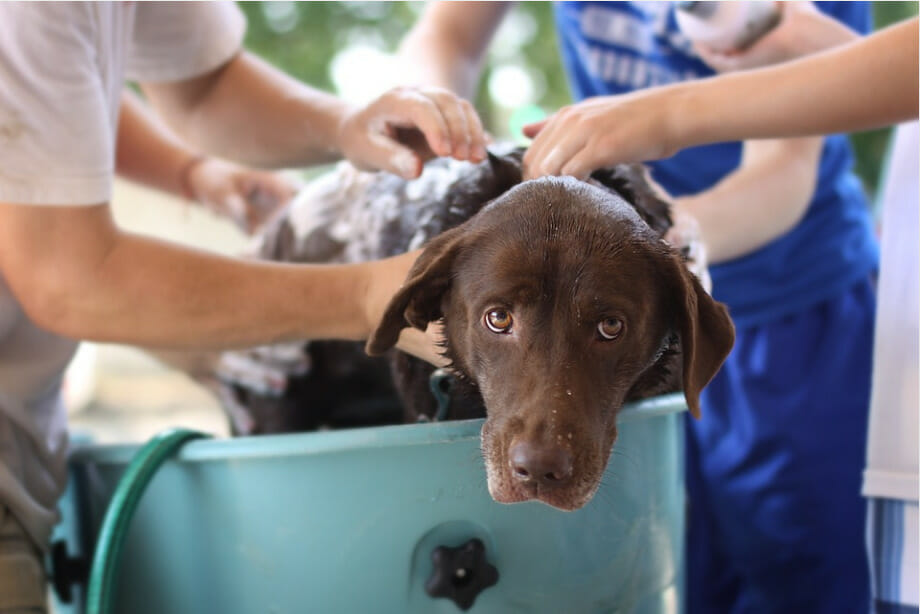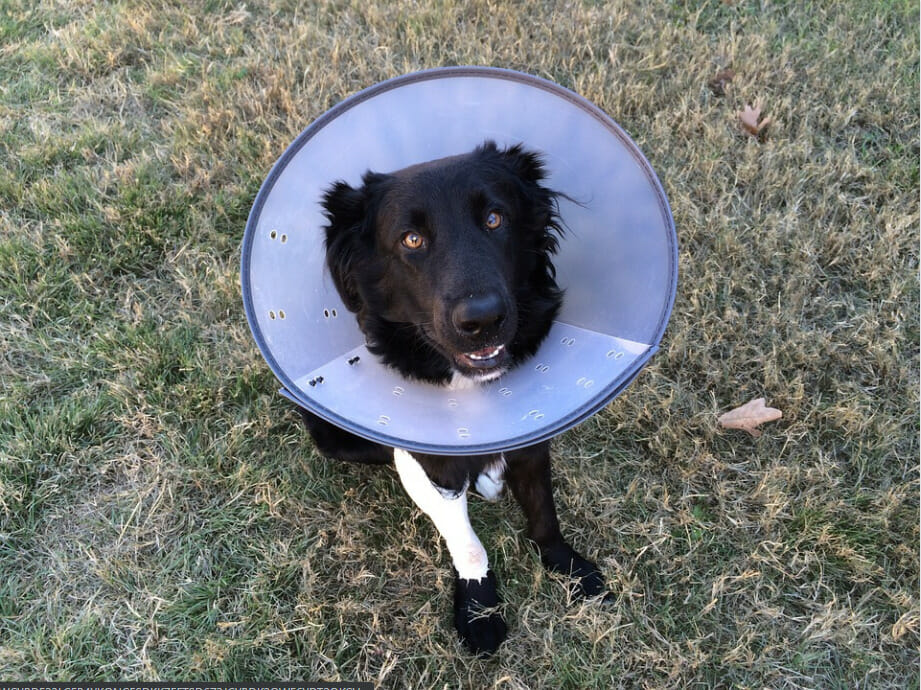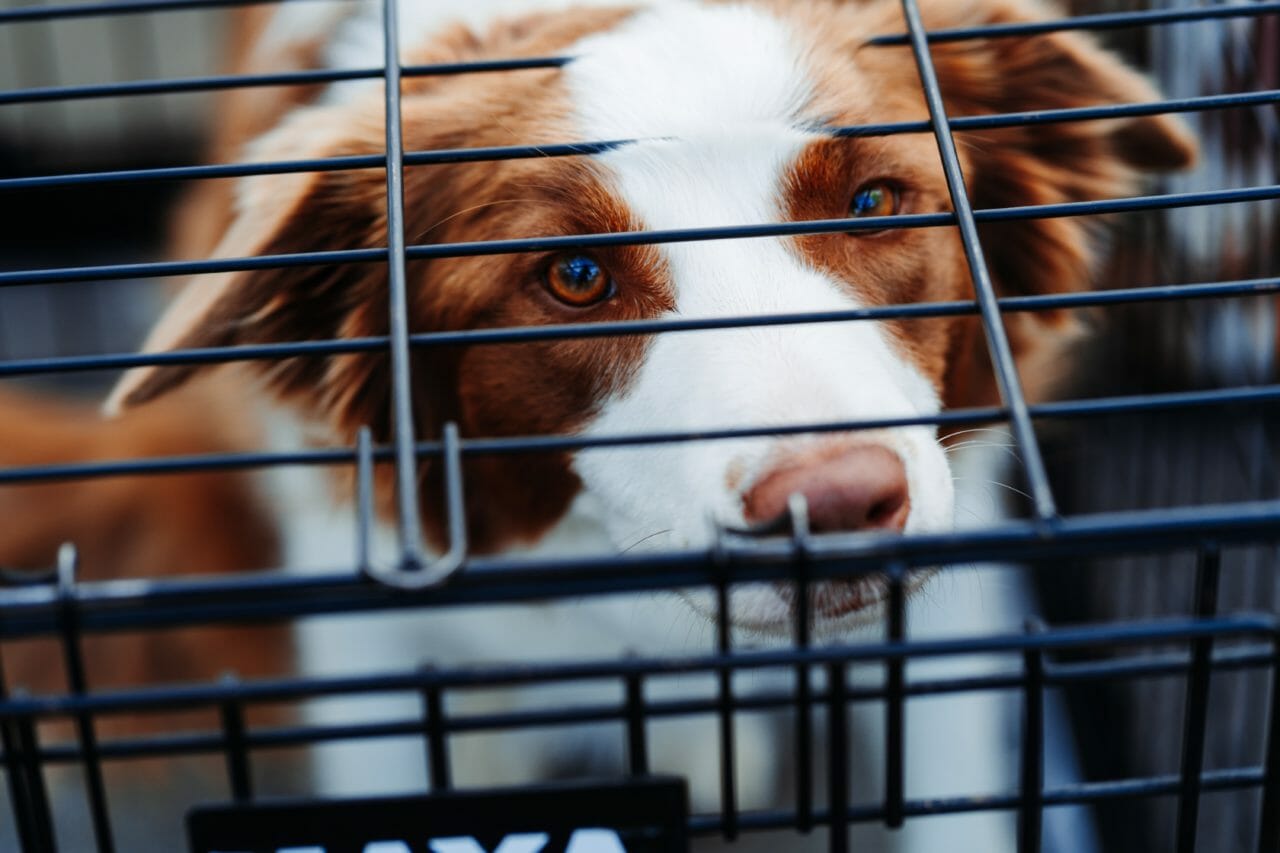How to get your pup clean after this difficult experience
You’ve just brought your dog home from surgery. Whether it is a spay, neuter, or another type of surgical procedure, your pup will need special care in the coming days.
One of the most important things you can do for them is keeping them clean – but how long after surgery can you bathe your dog without risking infection? In this article, RehabPet.com will discuss the dos and don’ts of bathing your dog after surgery and how to best care for a surgical wound.
Why Bath My Dog After Surgery?
Bathing your dog after surgery can help remove dried blood, keeping the surgical area clean and free of infection. It can also help remove any hair shaved for the surgery, making it easier to keep an eye on the incision.
It will also help reduce your dog’s risk of developing a post-operative infection. It also makes your dog feel good after spending all that time at the vet and being stuck doing less activity while they heal.
Bathing Your Dog After Surgery: What To Expect
The most important thing you need to remember is to follow your veterinarian’s advice. Each dog is different, and each surgery is different.
Some general things to keep in mind:
- You should typically wait at least two weeks before bathing your dog after surgery. This gives the incision time to heal and closes any open wounds.
- Your dog might be tired and not want to stand for a bath, so be prepared to help them.
- Consider using a pet-safe wipe if your dog reacts badly to baths.
- Be patient during the first few baths after surgery
As a dog owner, you will know them best. If you have concerns about bathing your dog after surgery, contact your veterinarian.
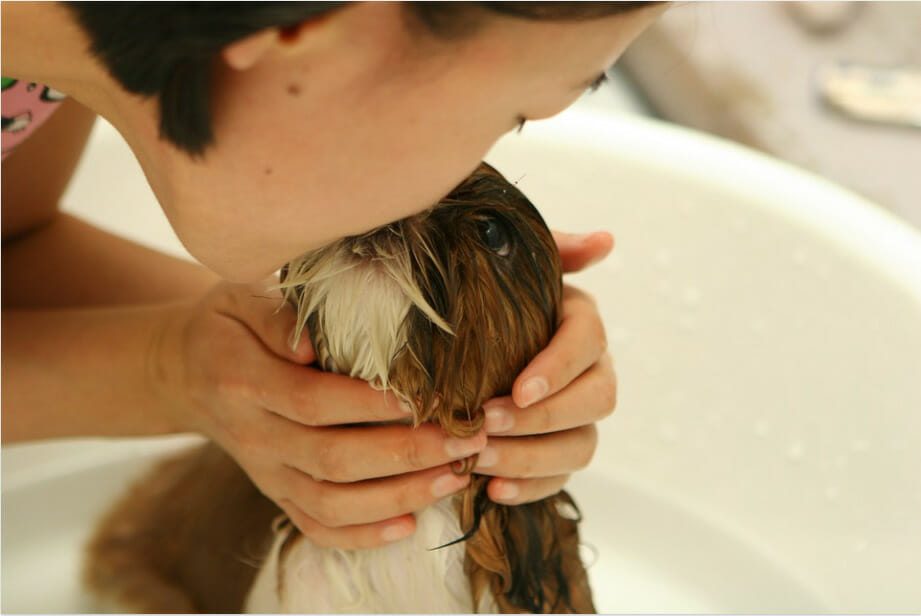
The Do’s and Don’ts During Bath Time
Now that you know the basics of bathing your dog after surgery, let’s go over some do’s and don’ts.
DO:
- Gather everything you will need before starting the bath. This includes shampoo, towels, a cup or pitcher for rinsing, and anything else you might need.
- Start with a small amount of water and gradually add more until it is at the right temperature.
- Test the water with your elbow or hand to ensure it is not too hot or cold.
- Be very careful around the incision site.
- Avoid getting soap or water on it directly, as this can cause irritation.
- Use a soothing, hypoallergenic shampoo. This will be gentle on your dog’s skin and will not irritate the incision site.
- Rinse your dog thoroughly to remove all traces of soap.
- Gently dry your dog with a towel, careful not to rub too vigorously.
- Allow your dog to air dry as much as possible
DON’T:
- Use human shampoo on your dog, which can be harsh and irritating.
- Get the incision site wet
- Use a hair dryer on your dog. The noise may scare them, and the heat can be too much for their sensitive skin.
- Force them to the bath if they are not in the mood
- Continue the bath if you notice any bleeding, discharge, or if the incision spot becomes red or swollen
- Use conditioner unless recommended by your vet
If you do happen to get the incision area wet, don’t worry. Just dry it off gently with a clean towel and contact your veterinarian if you have any concerns.
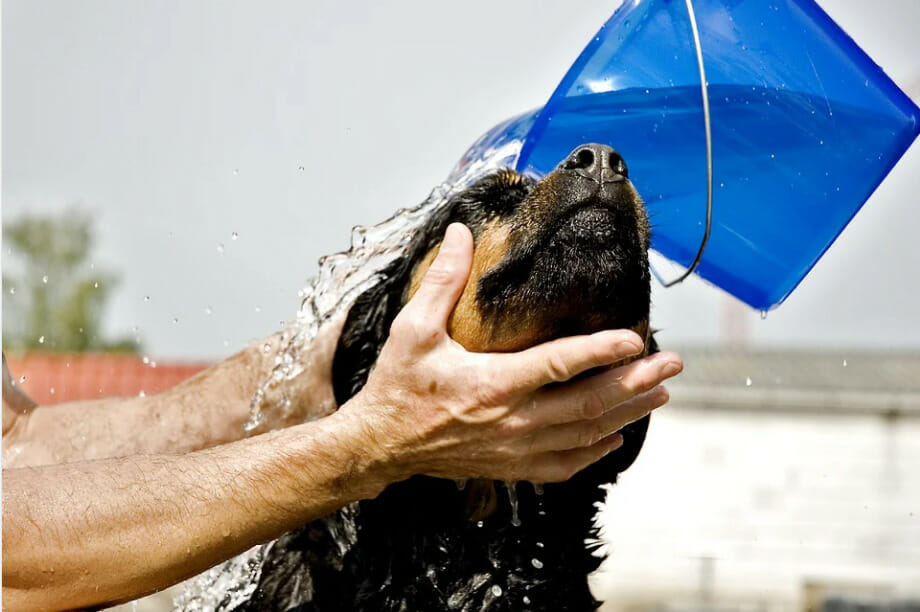
Complications Around Bathing Your Dog Too Early After Surgery
As we mentioned, waiting at least two weeks before bathing your dog after surgery is essential. This gives the incision time to close and heal properly.
If you bathe your dog too early, there is a risk of infection. The incision site is vulnerable to bacteria, and if water gets in, it can cause more issues with your dog’s healing process
Another risk is that the incision may open up if your dog struggles during the bath. This can be painful for your dog and require you to return them to the vet for the wound to be restitched.
How Do I Clean My Dog For Those Two Weeks?
So, you can’t give your dog a bath, but that doesn’t mean they don’t need to be clean. During the two weeks after surgery, you should:
- Spot-clean them with a pet-safe wipe or cloth as needed.
- Focus on their face, paws, and bottom since these areas tend to get the dirtiest.
- Brush them regularly to help remove dead skin cells and keep their coats healthy.
- Give them a good brushing before their first post-surgery bath to help remove any loose fur.
If you regularly take your dog to the groomers, you may want to schedule their appointment either before the surgery or a few days after the two-week mark. This way, you can be sure the incision has healed properly, and your dog will be fresh and clean for their next vet visit.
Closing Thoughts
We know you only want what’s best for your dog, including keeping them clean and healthy. Bathing your dog after surgery may seem daunting, but we hope this guide has put your mind at ease.
Just remember to take things slowly, be gentle around the incision site, and contact your vet if you have any concerns or additional questions.
